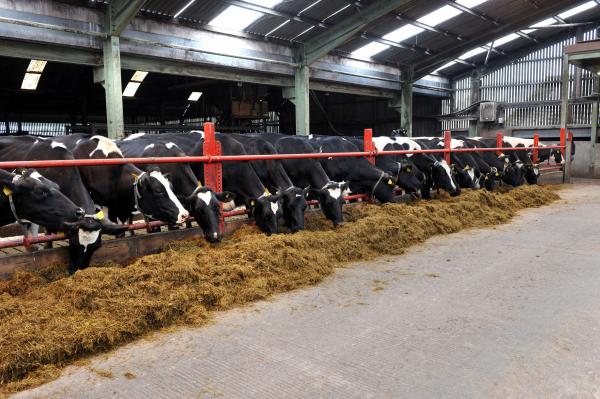



Listeriosis often found in silage fed in winter
Listeriosis is a bacterial disease caused by the bacteria Listeria monocytogenes.The bacteria is ubiquitous in the environment and survives well in moist soil for about 1 year. In domestic animals the disease is most important in ruminants and most commonly seen during winter months when animals are being fed silage. Listeriosis is usually acquired from feeding of poor quality or poorly fermented silage. However, it can still occur in animals on pasture, and infection almost always results from ingestion of the bacteria.
Listeria has a predilection for the central nervous system and more specifically the brainstem, with encephalitis being the most common presentation. The organism invades via breaks in the buccal membrane often linked to shedding and replacement of teeth, from where it then ascends the trigeminal nerve. Any practice that may damage the oral cavity such as dosing injuries or the feeding hard concentrate feed can also potentially predispose to infection.
While animals suffering from Listeriosis can demonstrate a range of symptoms, in cattle and sheep the condition is mainly seen as a nervous disease or encephalitis showing symptoms such as depression, head tilt, paralysis of facial muscles causing an inability to eat, and possibly death. A number of other presentations such as abortions and the birth of weak calves/lambs, or a systemic infection resulting in septicaemia with miliary abscesses throughout body organs can manifest. Other less common conditions can also present such as conjunctivitis most likely caused by dust from feed, endocarditis and mastitis.
Listeriosis abortion results from infection early in gestation whereas infection late in gestation results in stillbirth, or weak calves at birth. This form of the condition can occur in the absence of neurological disease but is often preceded by one or other presentations of the condition.
Definitive diagnosis involves culturing the organism from tissue of affected animals or from an aborted foetus, or confirmation by histological examination of brain tissue following post mortem on an animal with Listeriosis associated encephalitis. Tissues cultured might include brain and other organs, or placenta following post mortem examination of an aborted foetus or stillbirth.
Treatment for the condition using antibiotics can be successful if diagnosed early enough, however it can be unrewarding with low success rates particularly if the animal is already recumbent.
Prevention is achieved best when soil and faecal contamination of grass prior to and during harvesting for silage is minimised and ensuring conditions promote good anaerobic fermentation during the ensilage process. Farmers should ensure poor quality silage is not fed to pregnant animals and spoiled silage should be discarded.



